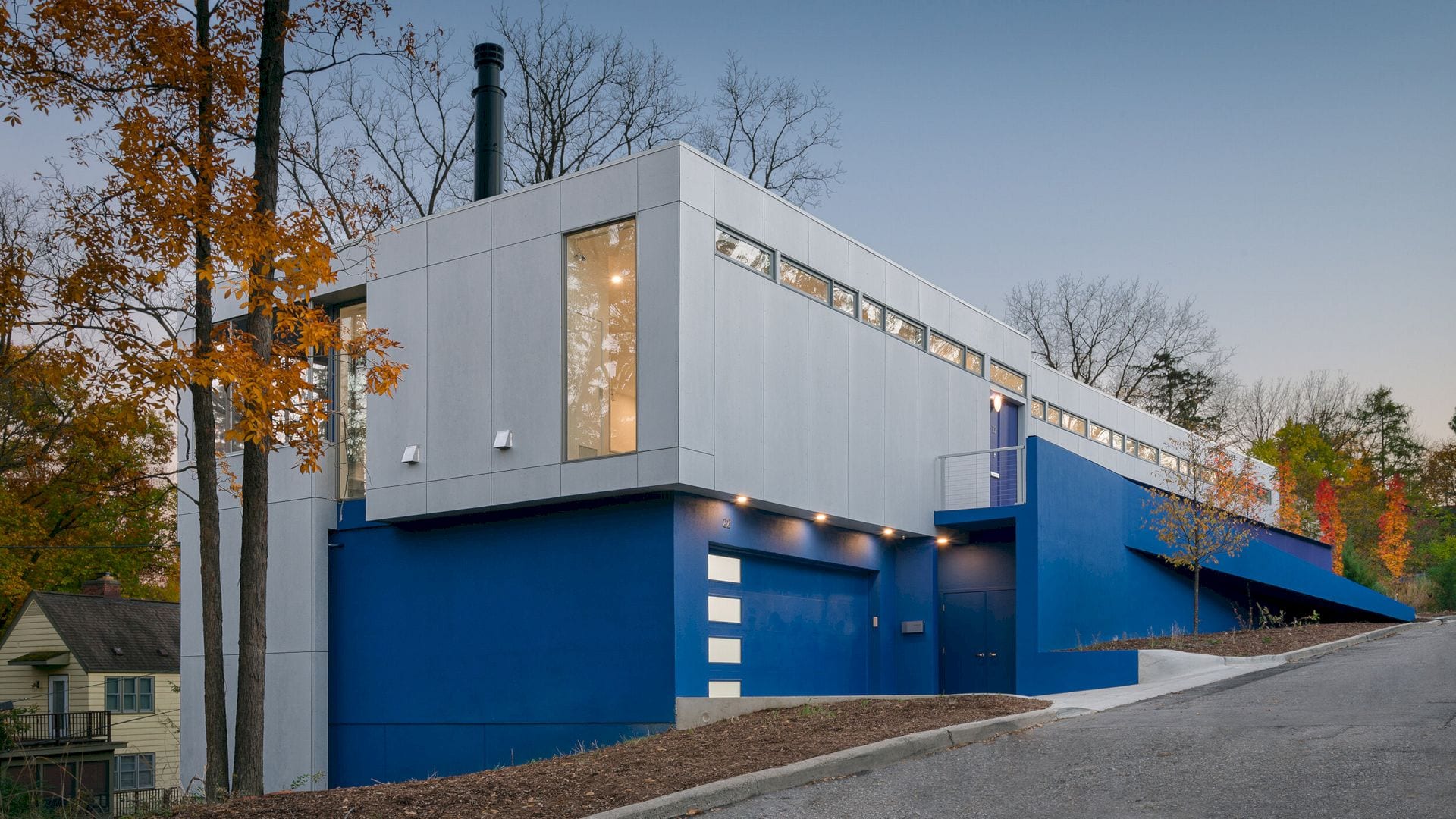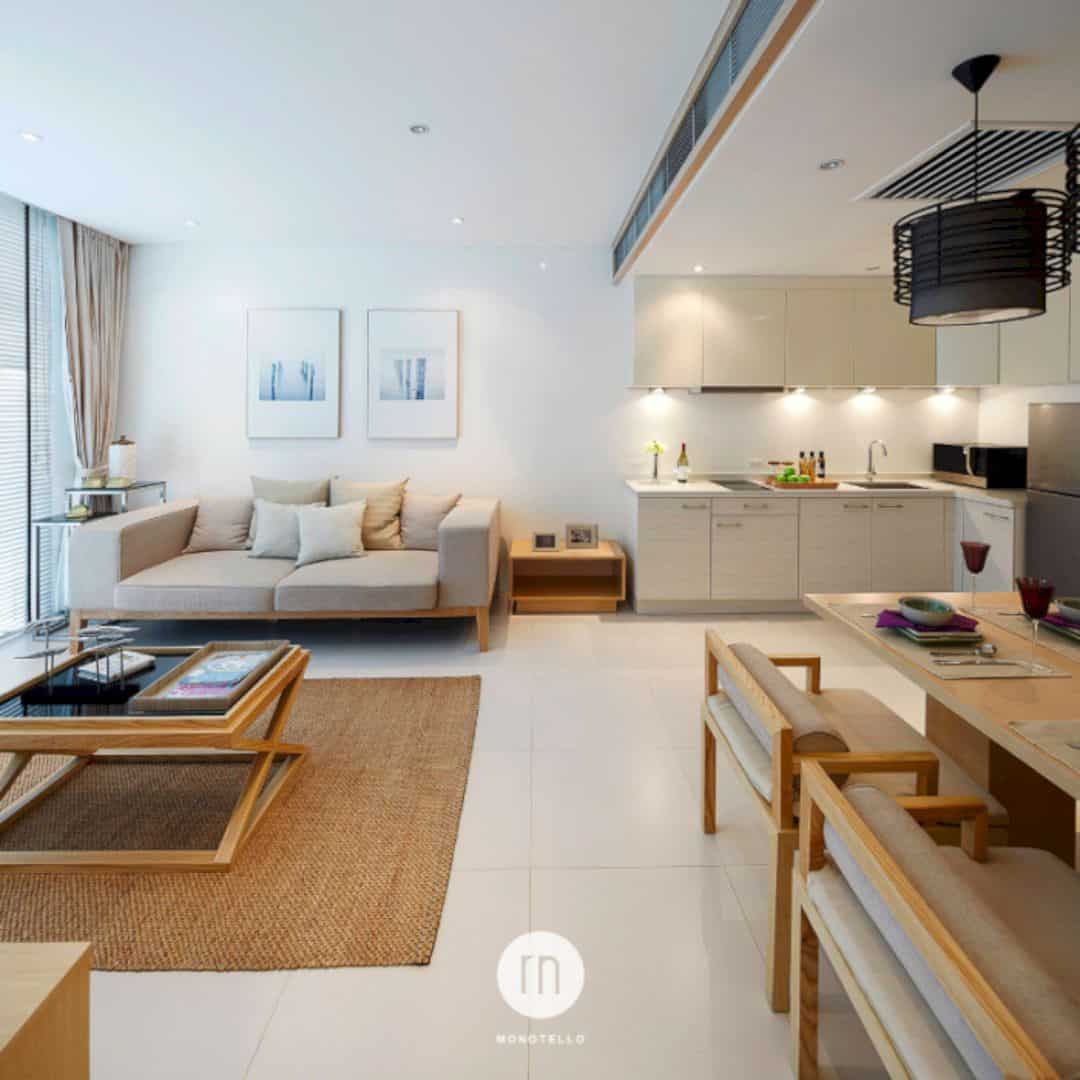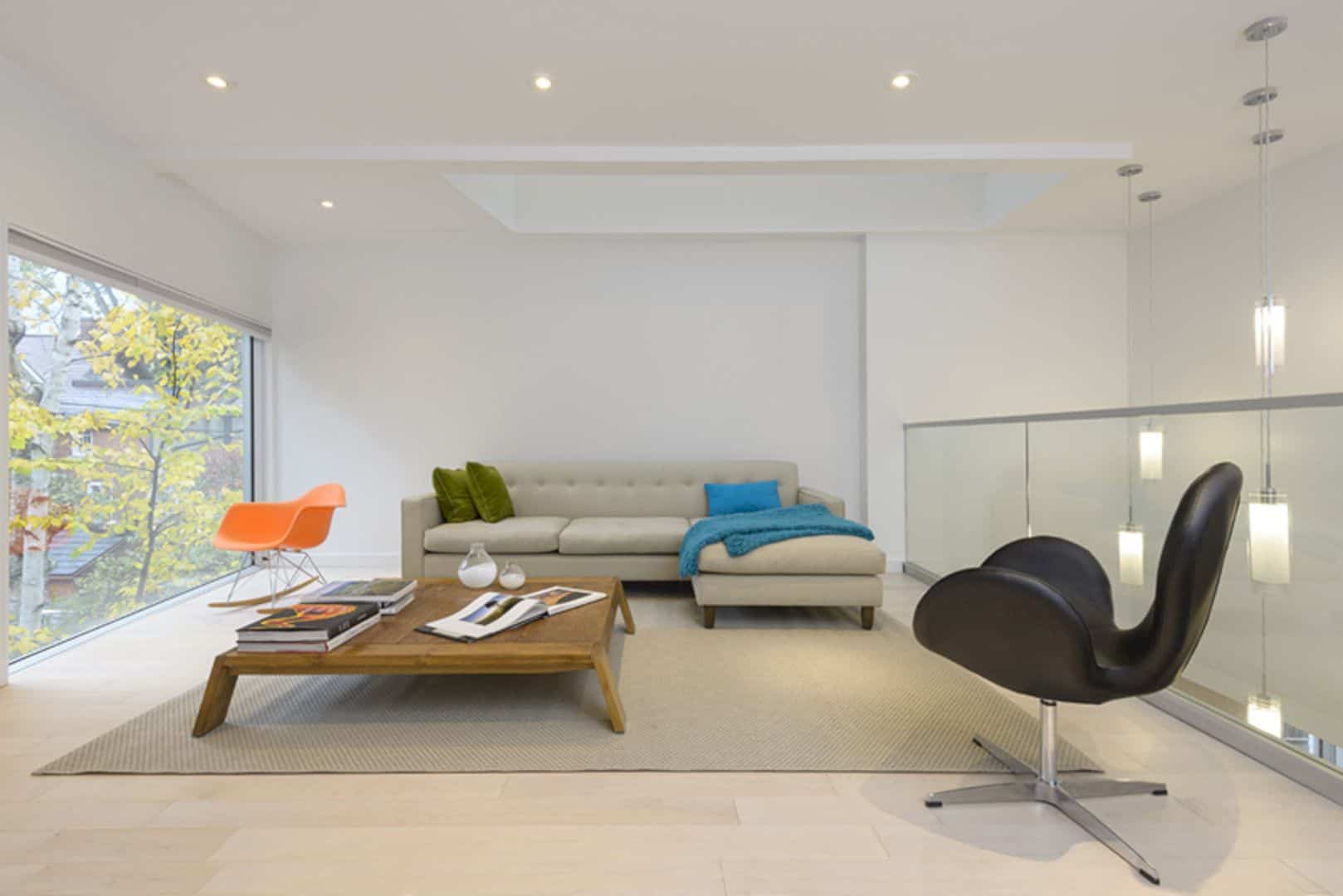Desai Chia Architecture designs this house as an assemblage of three offset structures in collaboration with Environment Architects (AOR) of Traverse City, MI. Michigan Lake House is a 2016 project located in Leelanau County, MI, the U.S. This house has gentle undulations on its roofscape that follow the natural terrain movement while the ‘shou sugi ban’ exterior that becomes rot-resistant and bug resistant.
Structures
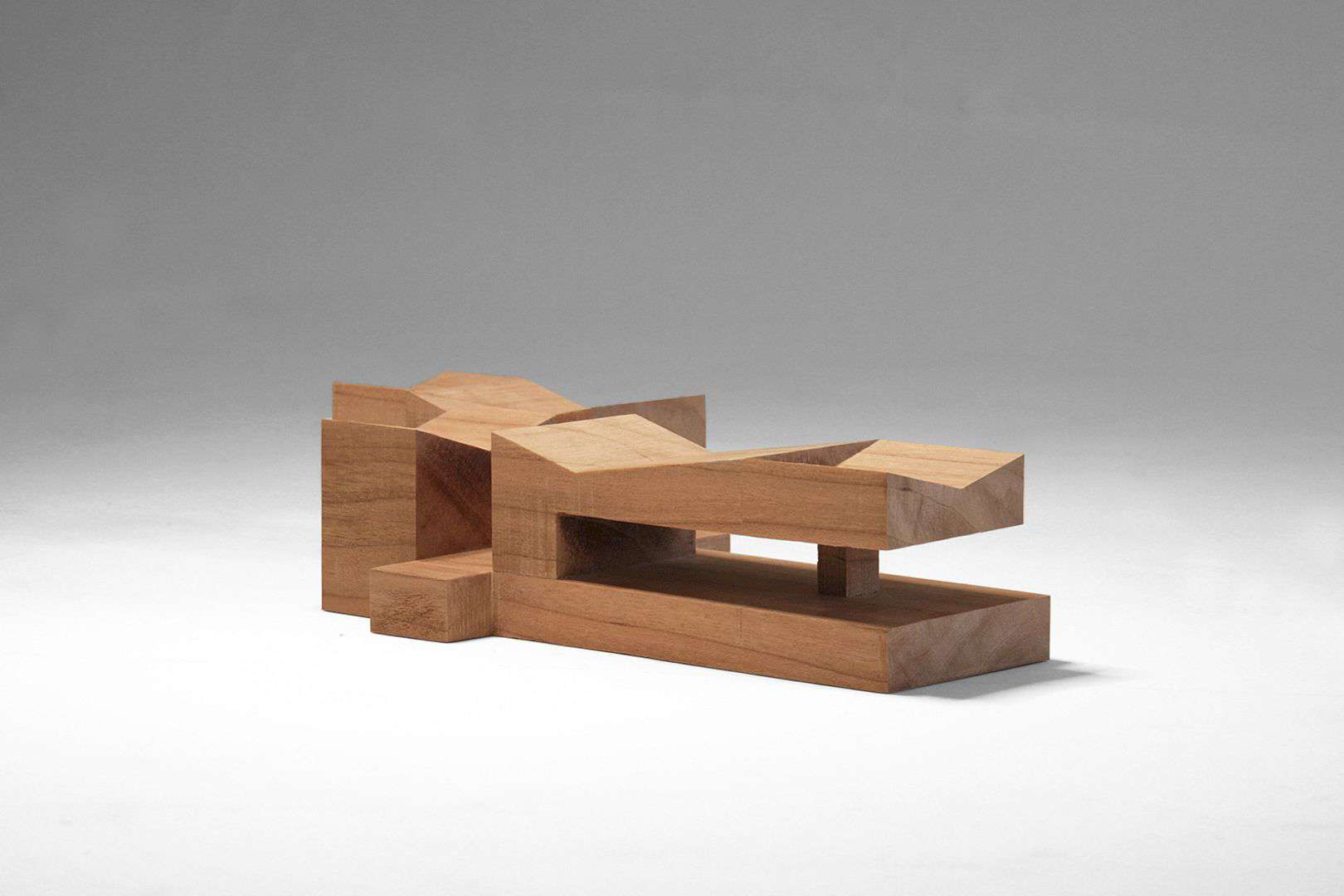
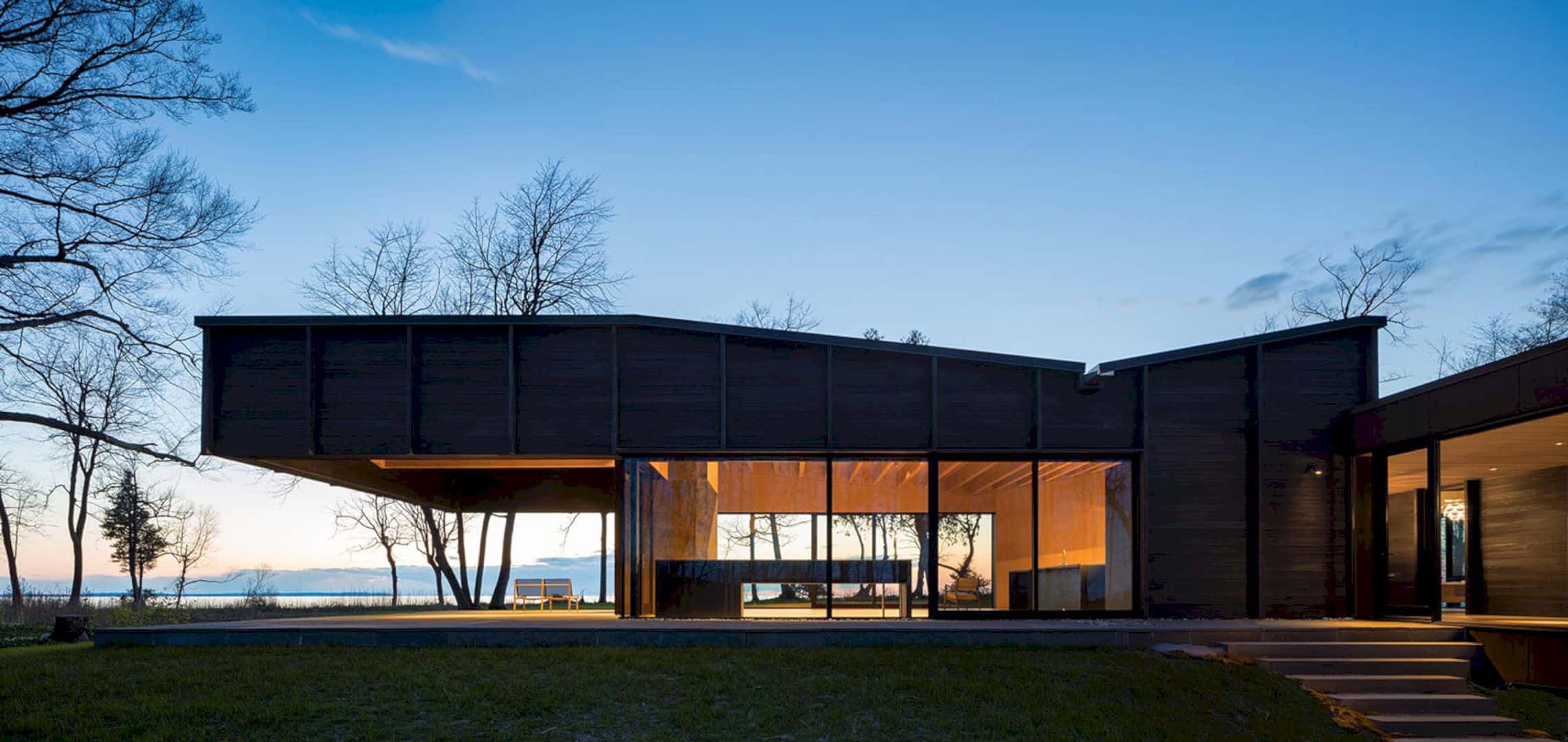
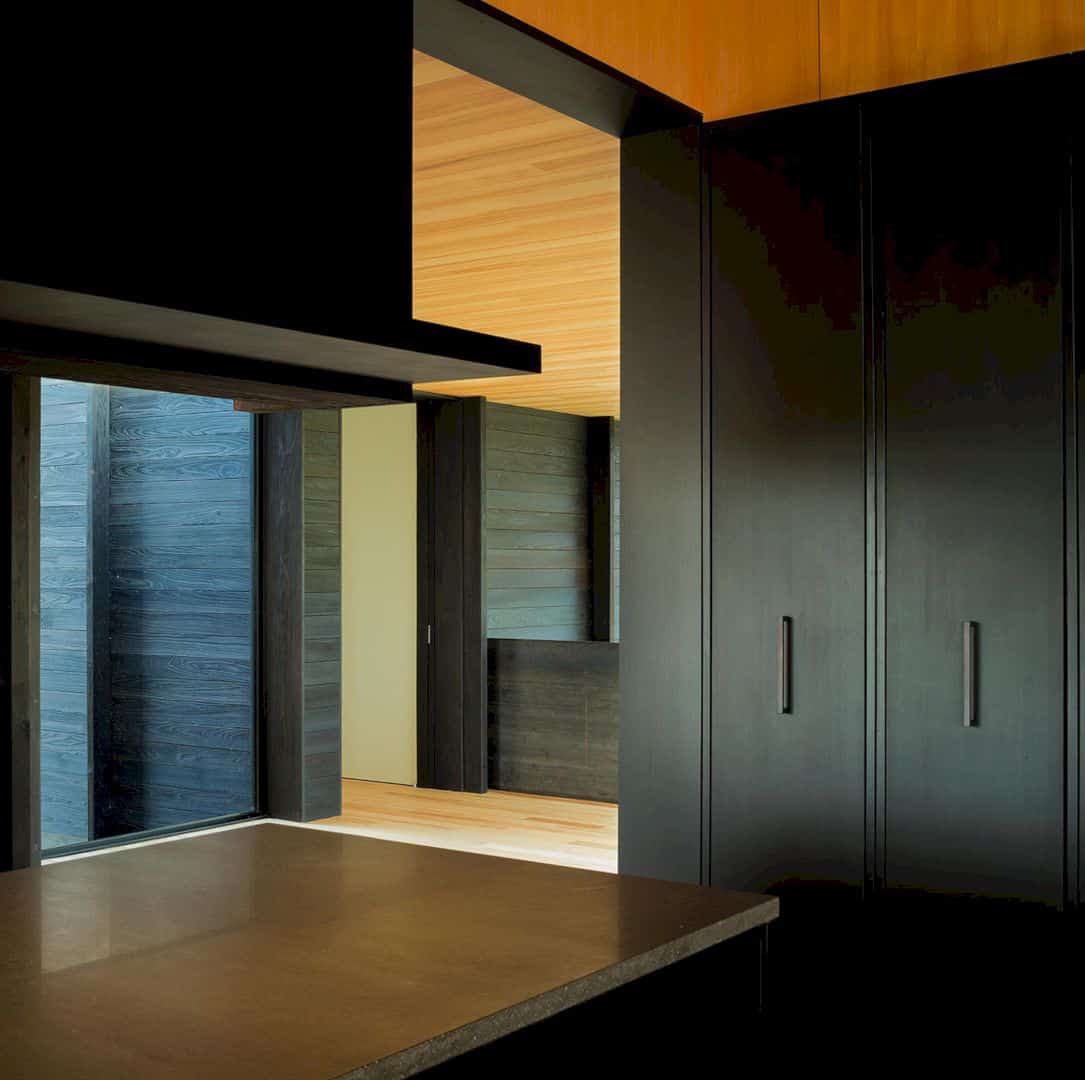
This house sits on a woodland bluff overlooking Lake Michigan with an assemblage of three offset structures. These structures play off each other: the two ‘sleeping’ structures house the three children’s bedrooms and the master bedroom suite, and the ‘gathering’ structure contains a covered ‘vista’ seating terrace, kitchen, and living room. All these three structures are connected by a dining area breezeway.
Interiors
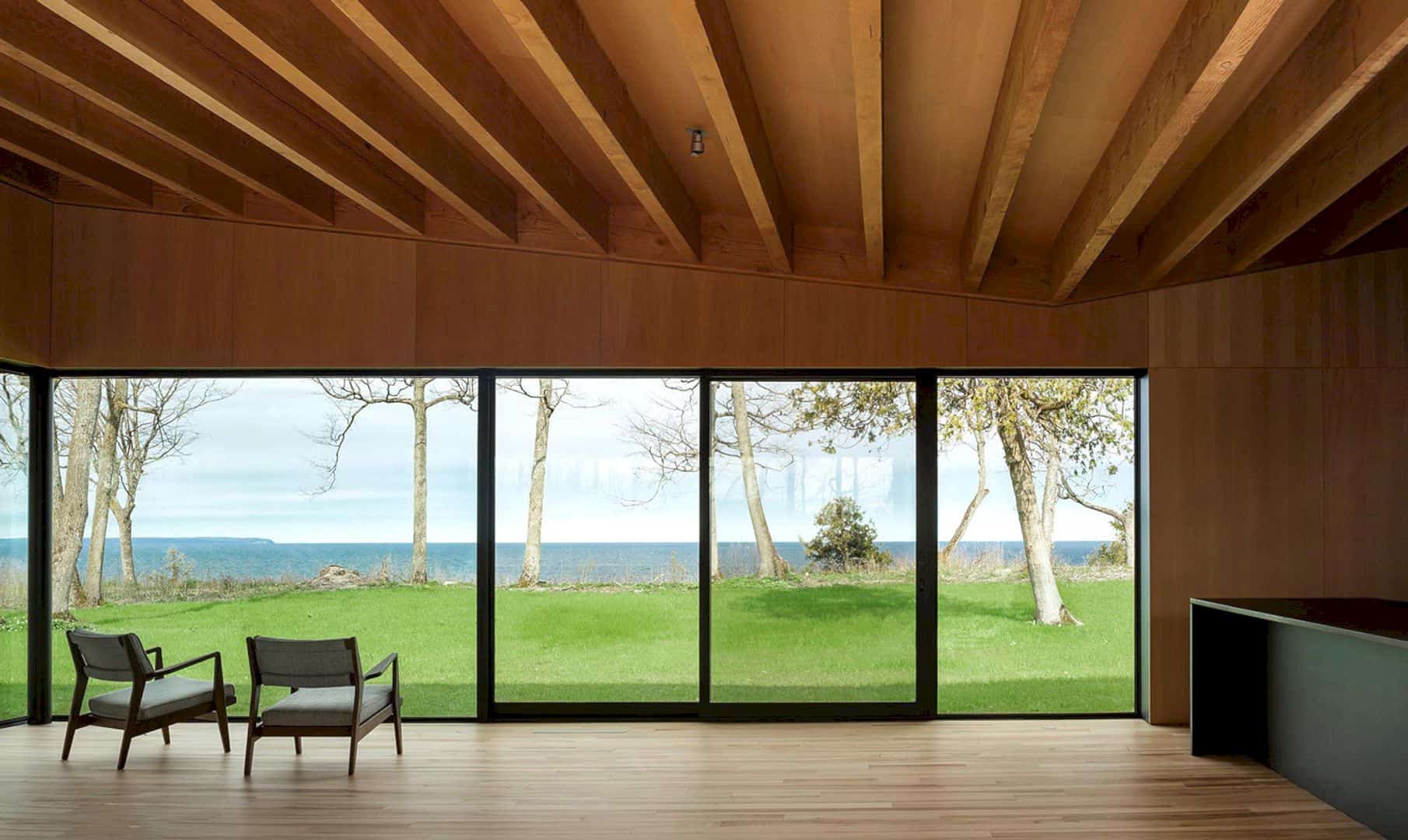
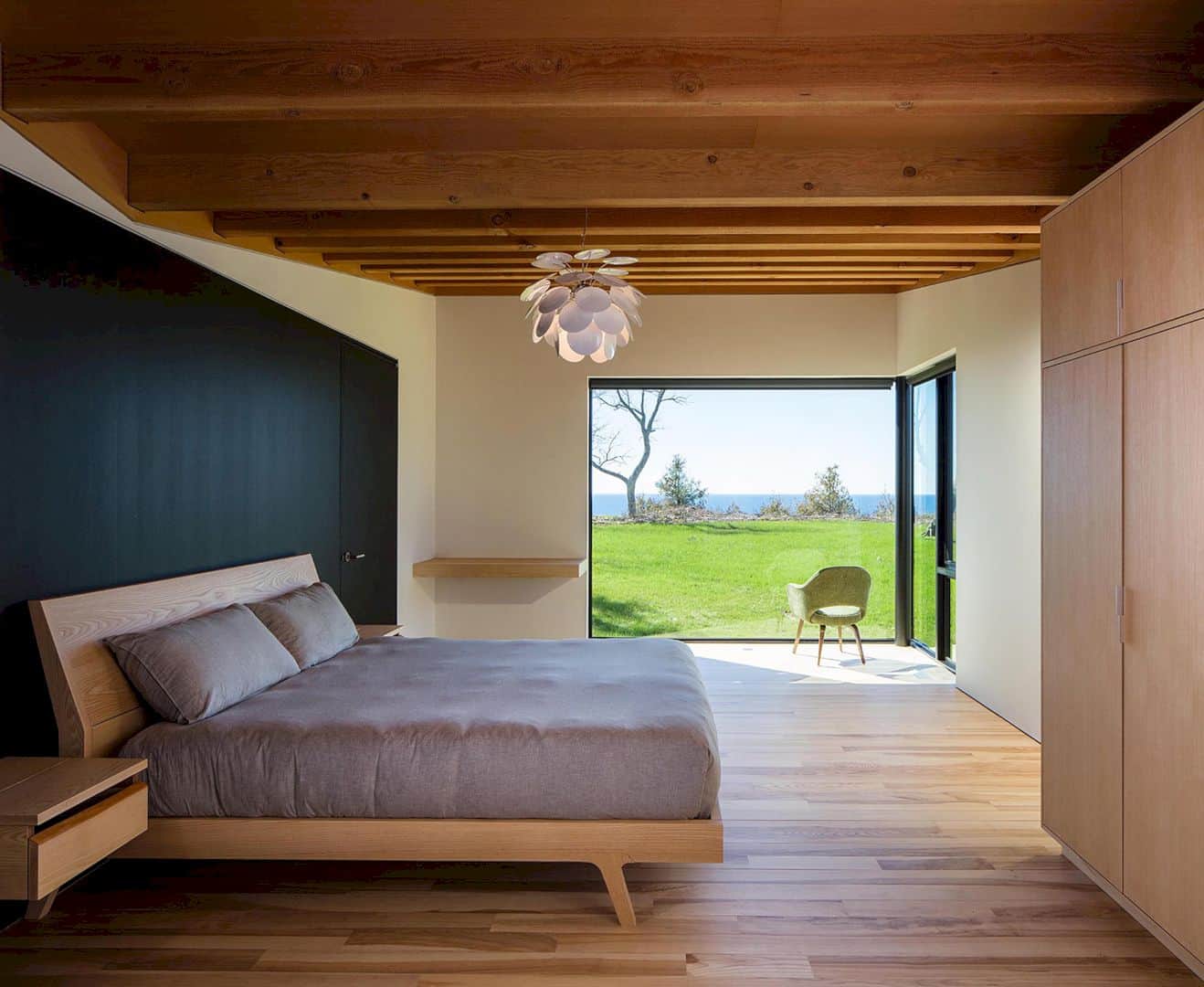
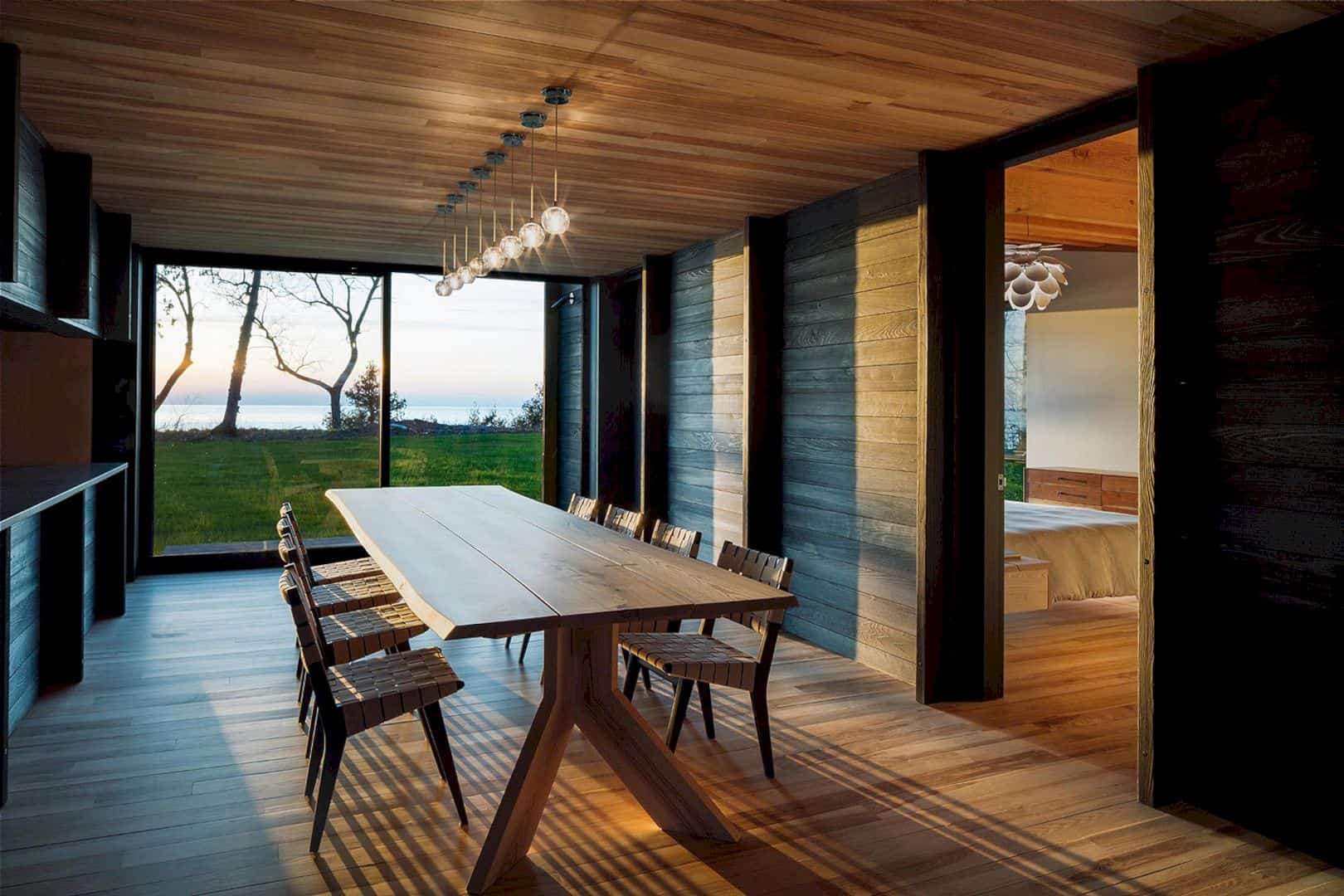
The architect reclaims and mills the ash trees from the site to be used as custom furniture throughout the house, trim work, ceiling panels, flooring, and interior cabinetry. This house interior can embody the indigenous landscape that thrived with old-growth ash once. With the use of ash trees from the site, this house provides a warmer and comfortable interior for its residents.
Roof
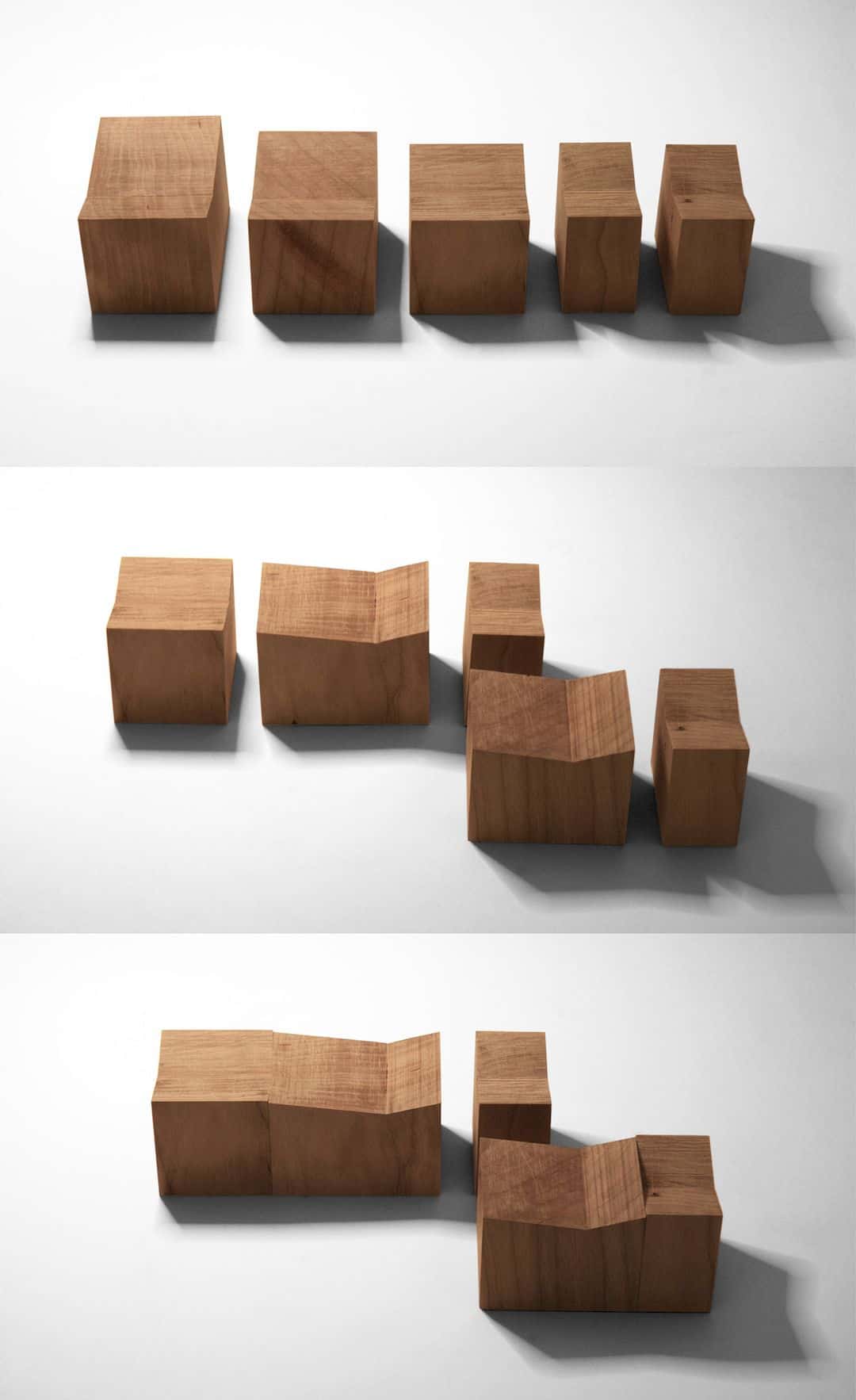
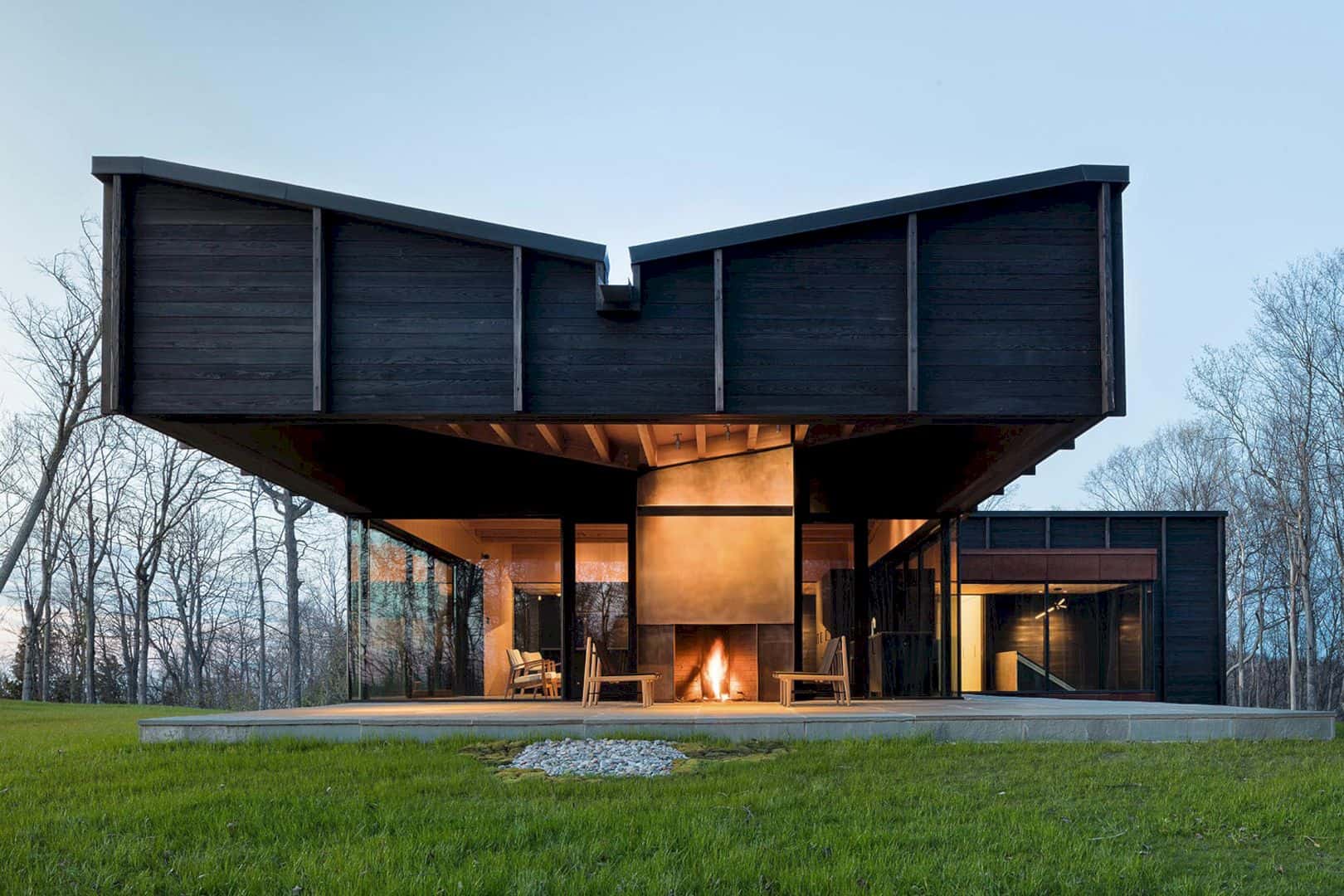
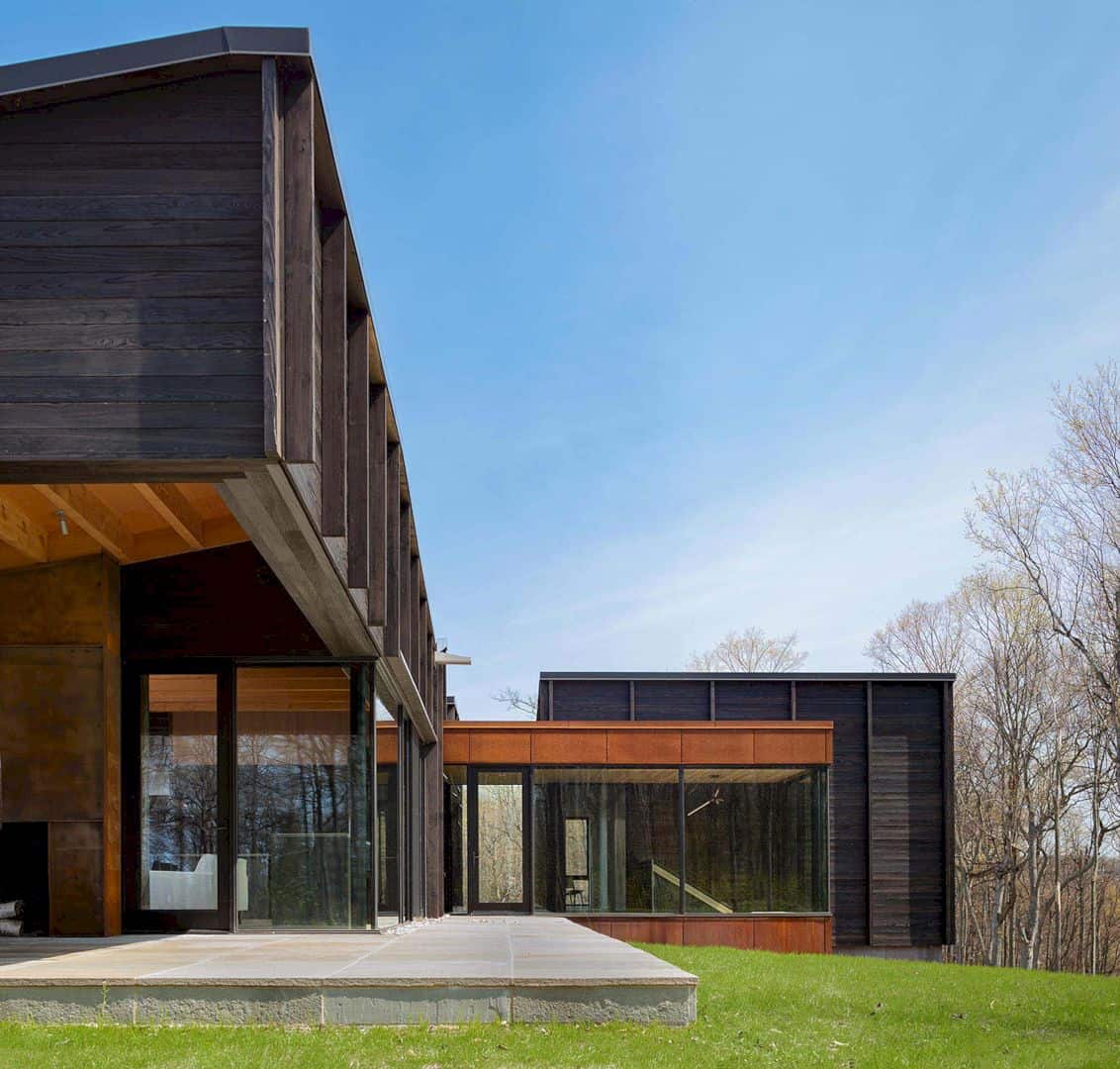
The roofscape of the house has gentle undulations, following the natural terrain movement and it also creates a playful reference to the vernacular architecture of nearby fishing villages. The rhythm of exposed wood beams can result in layers of asymmetrical vaults throughout the house interiors. There is a 20 foot cantilevered roof extends over the ‘vista’ terrace at the southern end of the house, offering a protected, unobstructed view of the surrounding woodlands and Lake Michigan.
Exterior
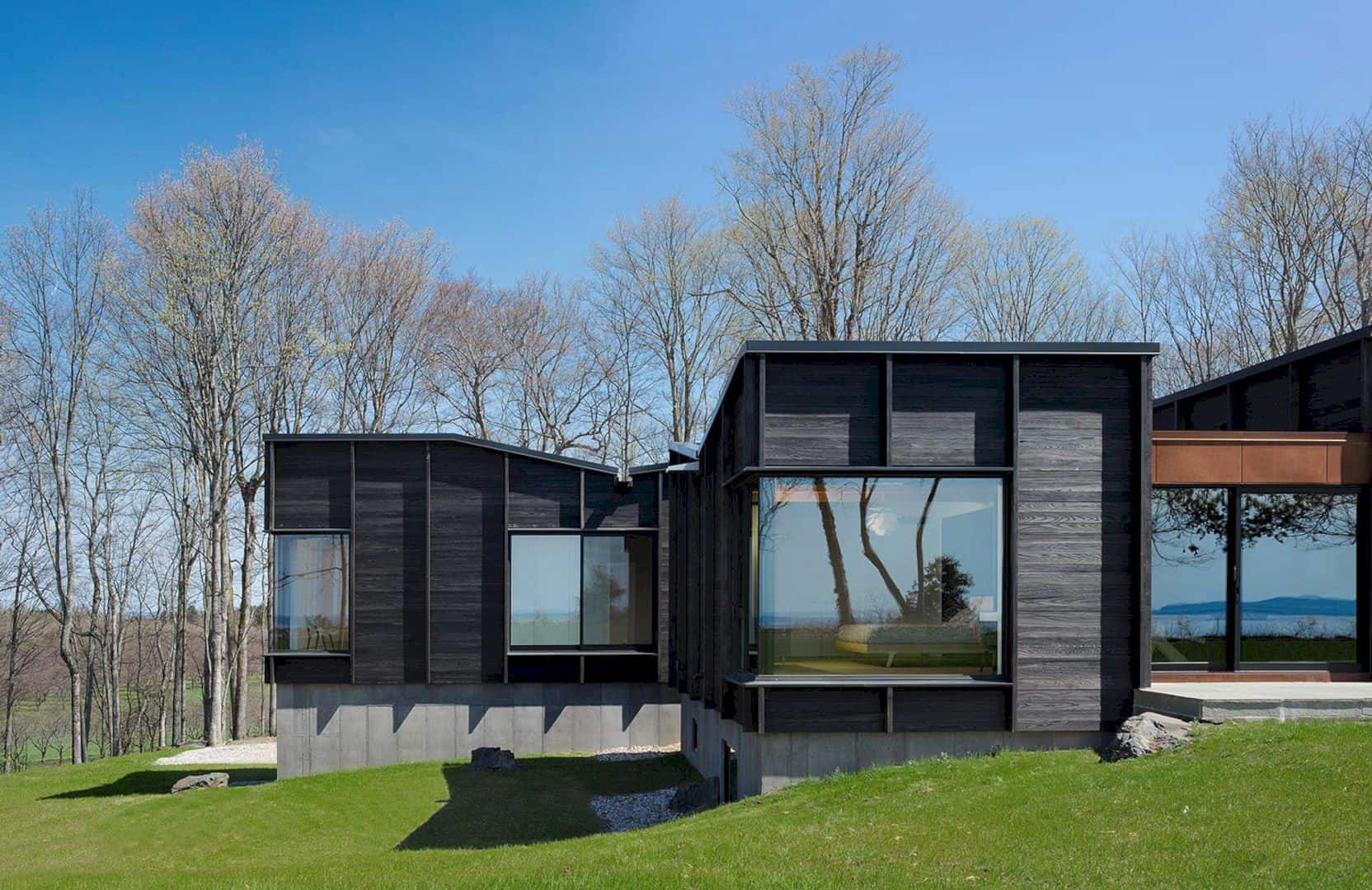
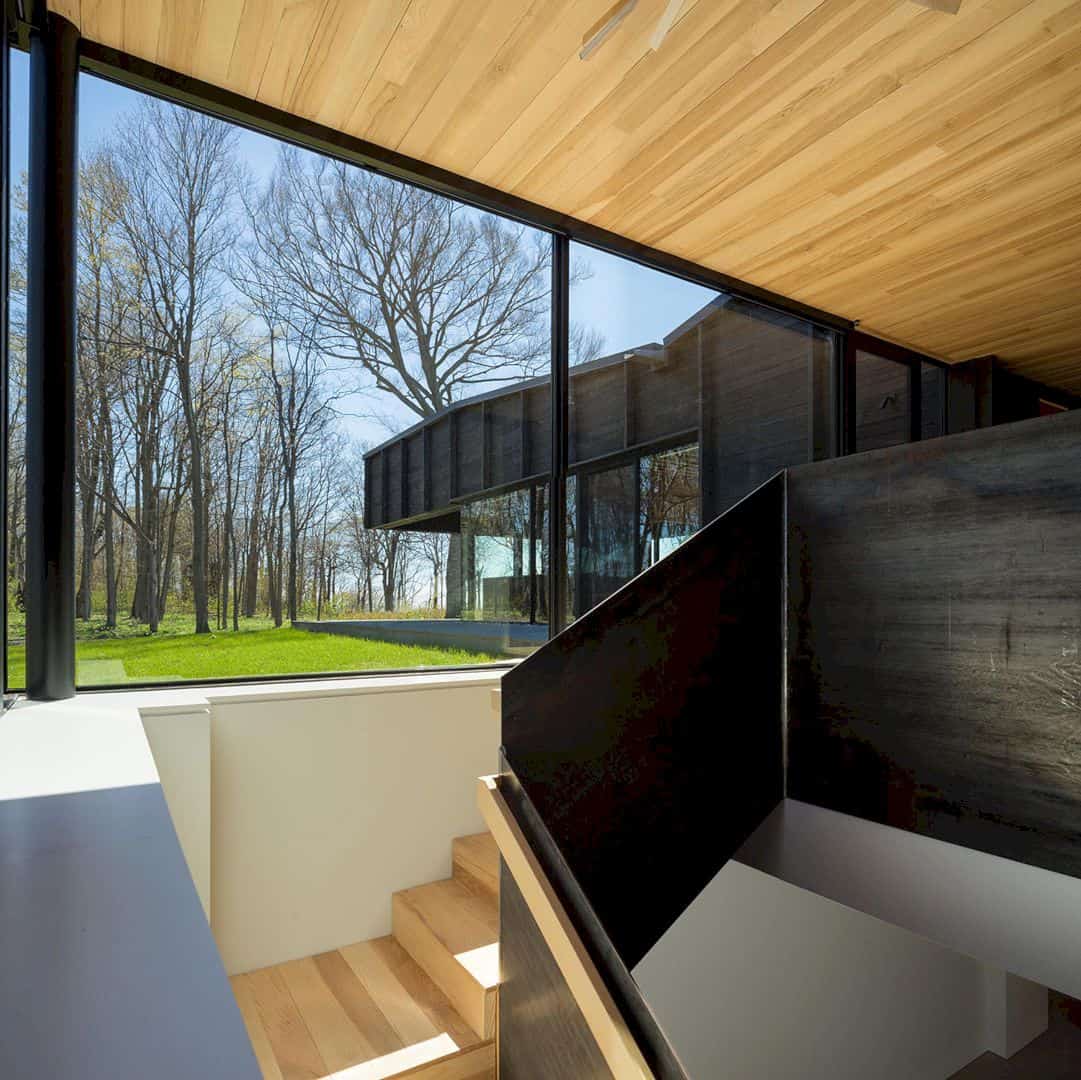
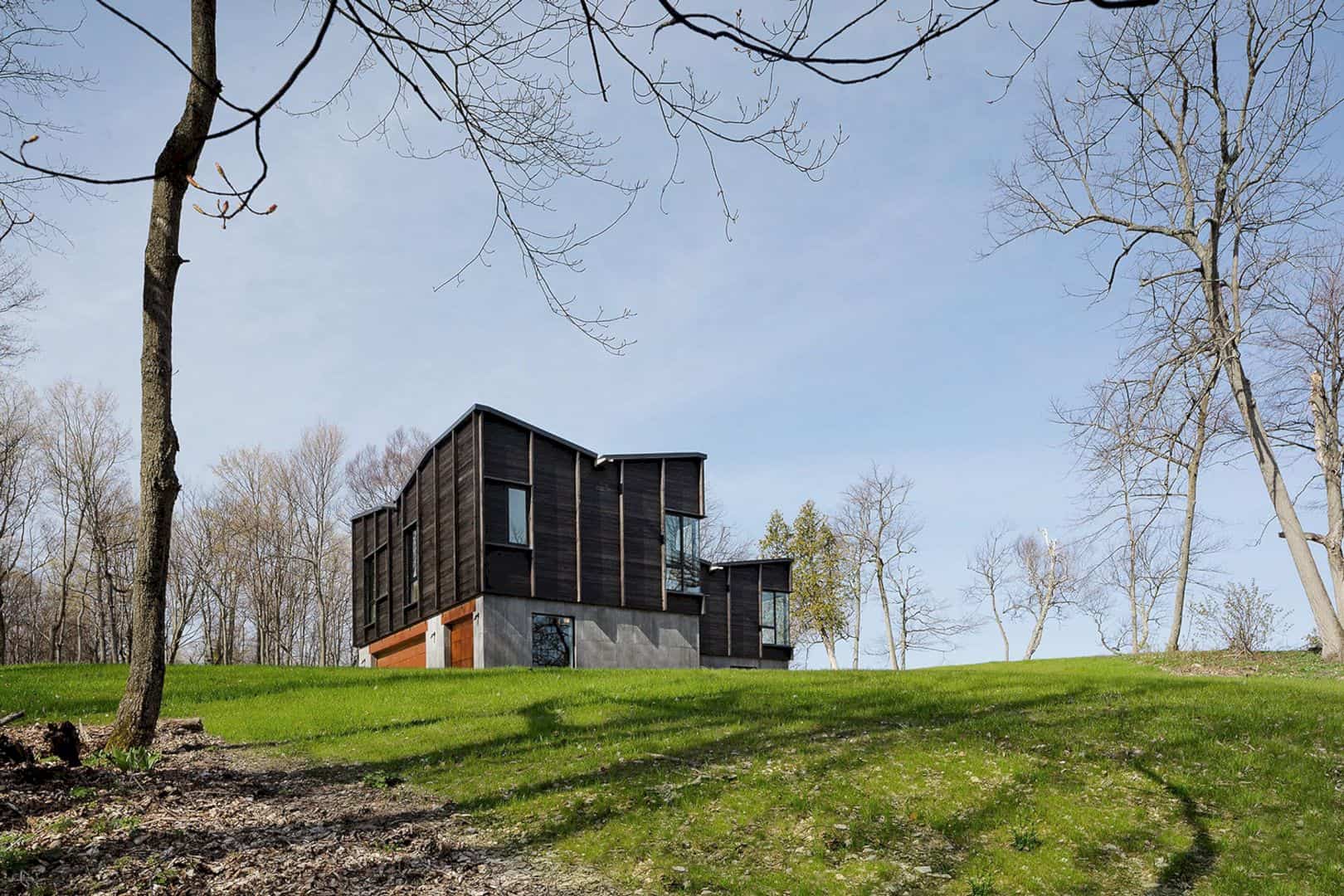
The house exterior is clad in ‘shou sugi ban’. It is a traditional Japanese method of charring wood, so it becomes bug resistant and rot-resistant. The modulation of deep facade members and the charred texture can enhance the shadows across the house facade as the sun sets and rises.
Design
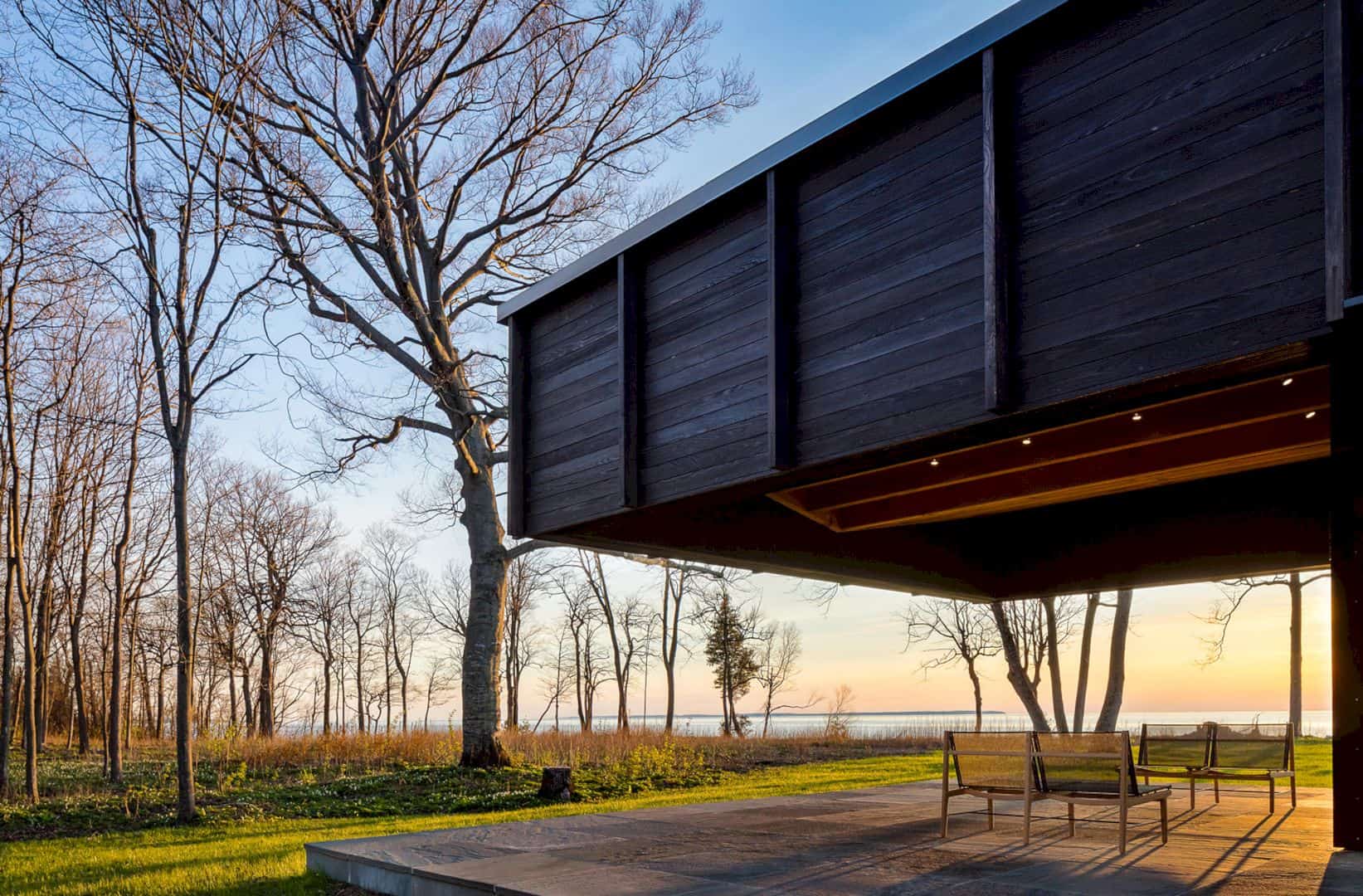
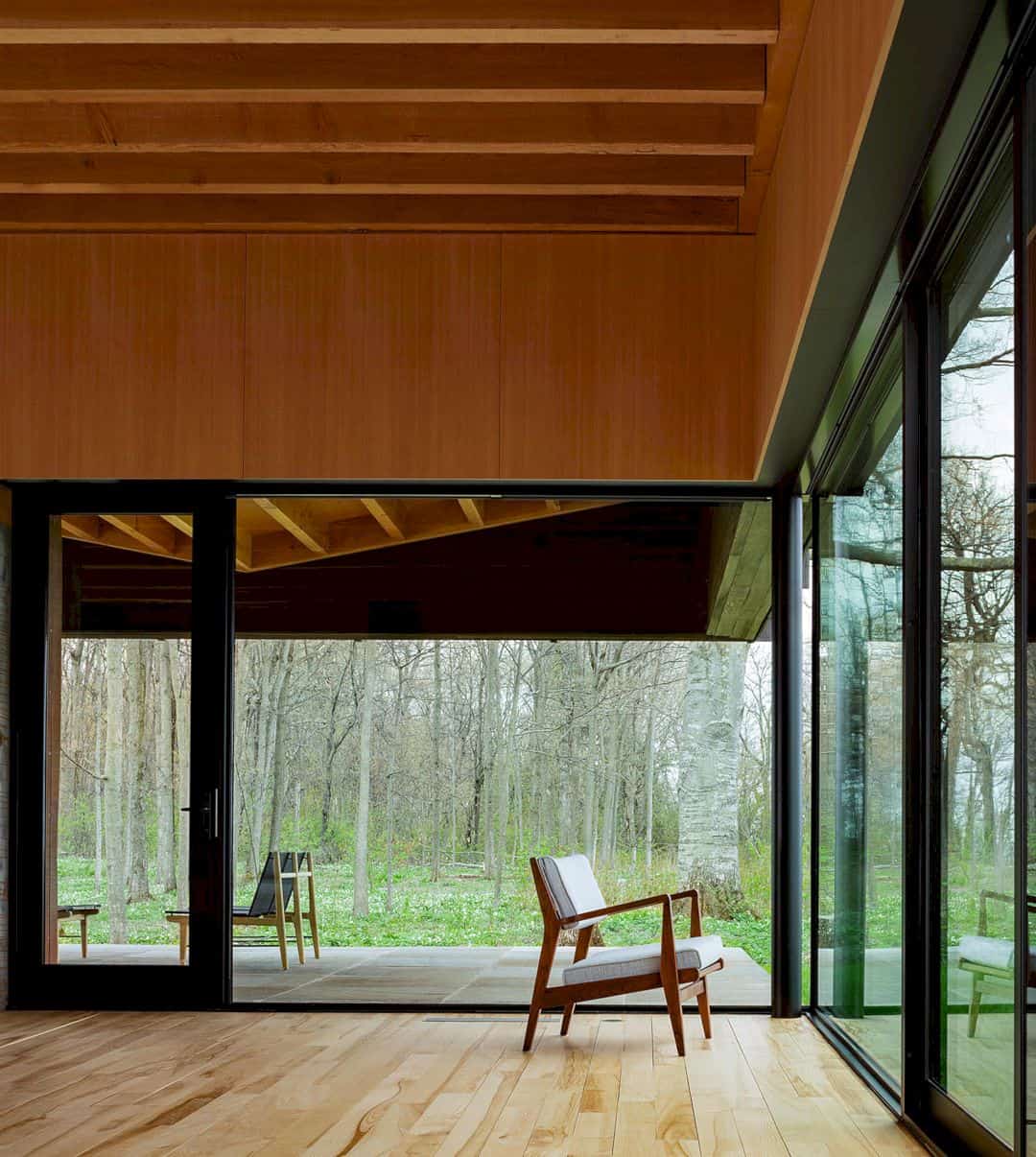
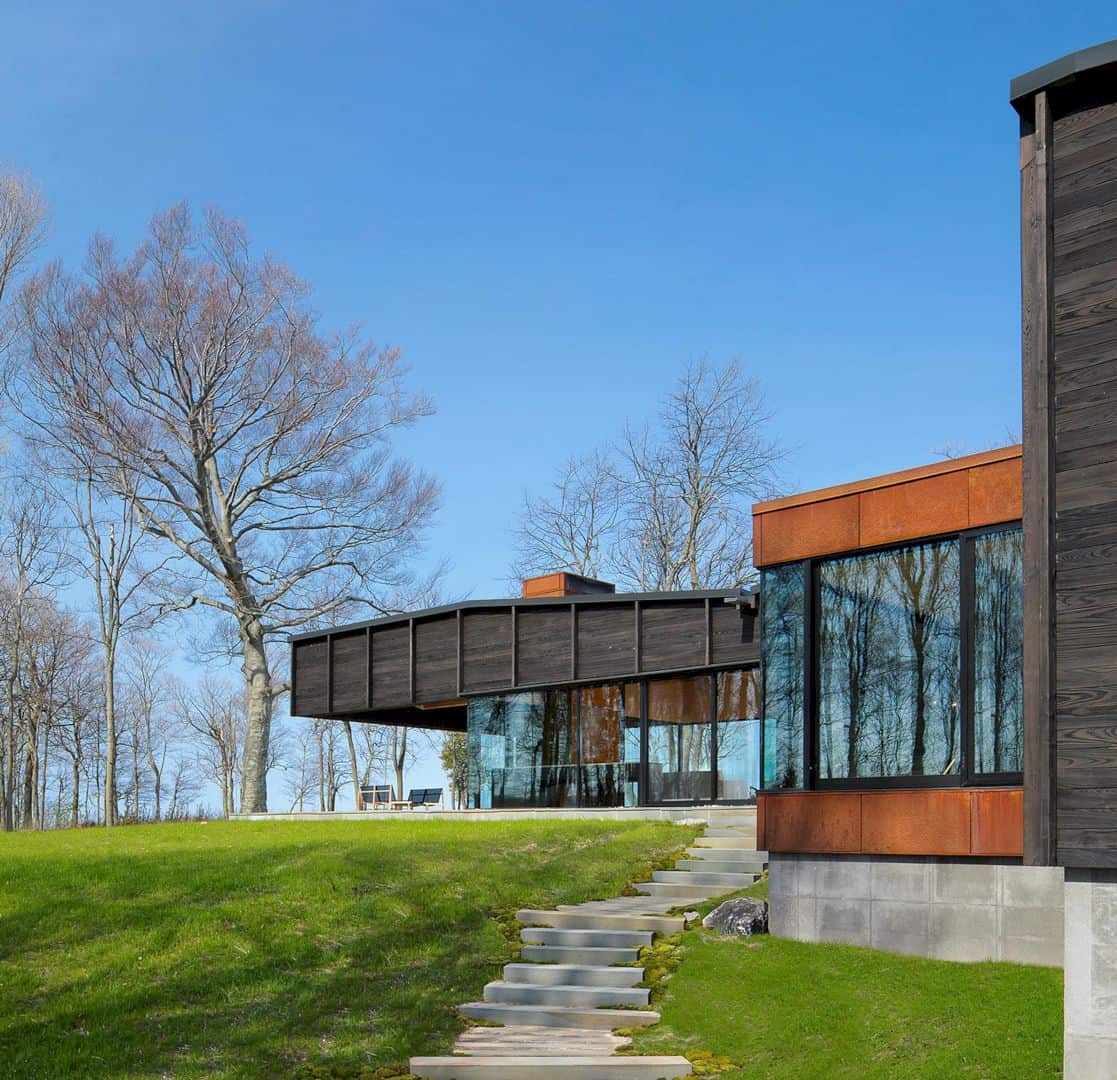
The design of the house is tied closely to the landscape design strategies of this project. There is a tight palette of native vegetation that highlights the surrounding views and managing the stormwater run-off at the same time. Steps, pathways, and outdoor seating areas are created by locally sourced stone.
Photographer: Paul Warchol
Discover more from Futurist Architecture
Subscribe to get the latest posts sent to your email.
